Fighters worth their weight in gold
“An advantage must attack at the risk of losing this advantage.” The old rule of a chess game prompted the US military to develop and put into service two aviation complexes, the fate of which is now in question because of their exorbitant cost.
Fifth generation combat aircraft is the most fashionable topic of the last decade. The public is full of enthusiasm: the country that first launches such machines will receive a decisive air superiority. The situation seems to be repeated a hundred years ago, when Great Britain launched the battleship Dreadnought, which once devalued the old customary armadillos.
Around what the fifth generation fighter should be able to do, and what he shouldn’t be able to do, the mass of copies is broken. The list of qualities of the aircraft looks like this: multifunctionality, cruising supersonic speed without afterburner of engines, radar and infrared stealth, radar circular review, the presence of a single combat information system with expert mode prompts and the ability to fire several targets at all angles. Each of these positions pulls a lot of requirements for high-tech products - electronics, software, polymers, structural materials, jet engines, radar equipment.
If we consider the combat vehicles currently available in production or at least commercial readiness, then the fifth generation includes only two aircraft and both of them are American - the F-22 Raptor and F-35 Lightning II.
Predatory plane
History The Raptor (Predator) is rooted in the first half of the 80's, in the ATF program (Advanced Tactical Fighter). By 1991, the base prototype was chosen - YF-22 developed by the consortium "Lockheed", "Boeing" and "General Dynamics". He formed the basis of the project of the new F-22 fighter, which rose into the air in 1997. From 2003, the aircraft began to enter service with the US Air Force.
As far as can be judged, the machine in operation shows itself relatively well. The monstrous amounts of expenditures for flight maintenance (44 000 dollars per hour of flight time) were voiced, according to the latest conclusions of experts, do not correspond to reality. Official Pentagon data do indicate that these figures do not greatly exceed the similar costs associated with operating the F-15 aircraft - the functional "ancestors" of the new fighter. We have not yet found substantiated confirmation of the widely spread in the press reports that the expensive coverage, which absorbs radio waves, turned out to be unstable to rain moisture.
However, the cost of the entire program for the creation and construction of Raptors exceeded 65 billions of dollars. Production of one machine costs 183 million dollars, and taking into account the R & D, its cost passes for 350 million. Outcome: The 2010 military budget of the year was imposed without F-22 procurement. Apparently, having appreciated all the “rapacity” of the financial appetites of the program, the Pentagon decided that for the time being the existing 168 aircraft were enough for him. It will not be possible to cheapen a car due to export: the fighter is legally prohibited to ship outside the United States.
Against the background of the initial statements about the complete replacement of the F-15 fleet with the Raptors, it looks almost scandalous: we recall that the issue price is 630 machines, of which around 500 are combatants. Even if the launch requirements of the Air Force (750 units) were too high, the last quota was set in 2003 and amounted to 277 aircraft, and was considered insufficient and forced (for financial reasons). One can only guess to what extent the US Air Force is satisfied with the current situation, but some experts point out in this connection the decline in the overall combat potential of American aircraft.
MAKE CHEAPER!
When the first real data on the serial cost of the Predators appeared, the Pentagon made efforts to somehow cut off the rising costs. The reduction in purchases of the F-22 was the second step, and the tactical step. Strategically, they tried to solve the problem in 1996, launching the development of a cheaper, multi-functional fifth-generation tactical fighter. This is how the JSF (Joint Strike Fighter) program and its awkward child, the F-35 Lightning (Lightning) aircraft, originated.
According to the requirements of the technical specifications, the car should have become lighter than the F-22, not so powerful, but on the other hand, it was necessary to go to the troops in three modifications at once. Option "A" - a tactical airfield-based fighter for the Air Force. Option "B" - with a short takeoff and landing for the Marine Corps. Option "C" - deck fighter for the Navy. The Pentagon has once again been seduced by the idea of saving through universalization, forgetting the old, repeatedly confirmed by the practice of truth: the universal weapon It combines all the shortcomings of the specialized samples it replaces and, as a rule, in the absence of specific merits.
American engineers noted that the F-35 project was born as a result of “close consultation” with the Russian Yakovlev Design Bureau, which at the time of the collapse of the USSR had an experimental model of a promising aircraft with a shortened take-off and landing - the Yak-141. If everything that later began to happen with the JSF program is a direct consequence of these consultations, then Yakovlev people should be given state awards for the collapse of the “likely enemy” expensive military program.
Seriously speaking, the F-35 project fell victim to, on the one hand, the conflicting desires of the customer, and on the other, technical and economic constraints that no longer allow them to build relatively inexpensive aircraft with such characteristics. The JSF program can be considered as a vivid example of what the attempt to create a combat vehicle on the verge of existing technology and even according to the principle of “the same, but cheaper,” leads to. One of the developers of Lockheed laconically remarked on this point: “They wanted a plane with such requirements - stealth, one engine, internal suspension, a shortened takeoff, and they got it.”
In September 2008, American experts in the field of aircraft industry published a note in the English review “The Defense Weekly”, where they issued an unflattering verdict to Lightning: “The F-35 program is unsuccessful and has every chance of becoming a catastrophe of the same scale as the F- project 111 in the 60s. " Comparison with the ill-fated F-111 is extremely accurate: it was a previous attempt to create a single “universal aircraft”, which was supposed to serve both in the air force and in various modifications the fleet, and even strategic aviation.
Officially published characteristics of the F-35 caused a lot of talk. The revolutionary innovation of American engineers from the aircraft industry consisted, for example, in the fact that the originally declared combat radius of the aircraft in various versions ranged from 51 to 56% of the maximum range. Whereas the classical design procedure, supported by ordinary everyday logic (it is necessary to fly back and forth and still leave a reserve for air combat and unforeseen maneuvering), lays this parameter in the 40% area of range. The substantive conclusion of the specialists is the same: the “Radiation” combat radius with outboard tanks in comparison with the maximum range without such has been demonstrated to the public. By the way, the data were later “corrected”: now the radius is strictly equal to half the maximum range, which still leaves the question open.
The subtlety is that the placement of fuel tanks or armaments on the external sling of this aircraft (and in the internal compartments it carries very modest 910 kg of combat load) immediately violates its “inconspicuousness”. This is not to mention the deterioration of the maneuvering and speed characteristics (and already quite weak, if we start from the official thrust-weight and geometry of the machine) and the ability to withstand the cruising supersonic mode (which some observers call into question without external suspension). Thus, the F-35 can really have such a combat radius, but in fact, having lost some of the critical tactical elements of the fifth generation machine.
Let's add here the “blooper” revealed in 2003 in the distribution of the weight limits of the structure (an unprecedented error in 35% of the calculated value, according to the lead developer of Lockheed Martin, Tom Burbage), which eventually led to a loss of time to find a solution, weighting the machine and .. spending an extra five billion dollars. But these five billions were only the beginning of an epic called "financing the JSF program."
TRANSFER OF RECOGNITION
In 2001, the Pentagon stated that during the implementation of the program 2866 F-35 fighters will be purchased, the price of one machine in production will not exceed 50,2 million dollars. Seven years later, the US Department of Defense "recounted" the budget: by that time, the American Navy had come to the conclusion that, by common sense, they did not need four hundred Lightnings. Now it was planned to buy only 2456 aircraft, but the total contract price did not fall at all, and even rose to 299 billion dollars. Because of such expenses for two years, the schedule of deliveries of equipment to the troops was extended.
And, finally, another attack of "rediscounting". In the spring of 2010, the Pentagon was forced to officially admit to Congress that the implementation of the JSF program again violated the “Nunn-McKerdy amendment” (an excess of the military project budget was allowed). The US Department of Defense through clenched teeth called the new figure - 138 million dollars for one F-35 fighter in 2010 prices of the year. Thus, the initial cost of the car, voiced by strategists from Potomac in 2001, jumped 2,3 times (c eliminating inflation and rising prices).
It should be emphasized that this is not the last part of the “Marlezonsky ballet”. The above value represents only the average estimate of the cost of the fighter in terms of its mass production "taking into account export contracts" (and we will return to this difficult question a little lower). In the meantime, other numbers are in the hands of the congress: in 2011, the US military orders the first batch of 43 "Lightning" at a price of over 200 million dollars per car. It is clear that when mass series are deployed, the unit cost per plane will decrease, however, this process can be used to the same extent to embed design costs into the prime cost.
Procurement of small series also does not inspire optimism: the Pentagon’s last contract with Lockheed Martin for the fourth trial lot - 5 billion dollars for 31 “Lightning”. Moreover, the agreement states that the price is fixed and in case of additional expenses the contractor undertakes to cover them at his own expense.
This fact indicates the real danger of exceeding the “current final” cost figures. The US military, apparently, has exhausted reserves for a further increase in purchase prices for equipment and can effectively impose its budget only by reducing the supply or a noticeable lengthening of their terms. Both that, and another will lead to the actual increase in the unit cost of the purchased weapons unit, as is the case with the F-22.
FOREIGN WILL NOT HELP?
The F-35 program was supposed to be “cheaper” primarily due to large export deliveries. According to the initial plans, up to 2035, the years abroad had to go over 600 machines, and with the possible expansion of the “partners” of the program, their number could grow to 1600.
However, the rise in price of the aircraft and growing doubts about its combat effectiveness do not go unnoticed. So, the UK is considering reducing purchases from 140 machines to 70. Evil tongues already in pure English joke that the total amount still does not seem to change due to the increase in the contract price.
For small partner countries, the situation is even more complicated. The Netherlands delayed the acquisition of F-35 for several years and reduced their number from 85 to 58 units. Denmark this spring froze the question of supplying before 2012, with a “good" prospect of completely abandoning such an idea. And Norway recently made a strong-willed decision to postpone the receipt of its "own" 48 fighter immediately until 2018 year. The official reason is that the Ministry of Defense of the country stated that “it does not understand at what prices it will be forced to buy these aircraft.” Against the background of the fact that the Pentagon itself is not fully aware of how much this “golden fighter” will cost him, such a formulation would not be called mocking.
Much more promising is the fate of Lightning in the Middle East. Literally, Israel has just signed an agreement to acquire X-NUMX F-20 fighters, agreeing to pay out for every 35 million dollars. There is also a clause on the potential increase in supplies to 138 machines, and the Israeli side has already stated that it is “ready to use it”.
However, the optimism of Tel Aviv should not be misleading. The Jewish state has always sought to get the most advanced models of weapons and military equipment, regardless of costs. Israel’s strategy is to restrain Arab neighbors, and this issue should be viewed not in the context of the military economy, but of politics. So, the Jewish state in its time put a lot of effort to get the first among the Middle Eastern countries to get advanced samples of the fighters of the previous generation (F-15 - in 1977-m, F-16 - in 1980-m).
Therefore, the Israeli order does not at all confirm the international success of the JSF program, but is an attempt to pass off the need for virtue. Tel Aviv is in a situation where it has no other options than to pay any money for the planes that it considers vital. Moreover, most of the money for the contract will be deducted from the package of US military assistance. Simply put, the end-customer of a fair amount of Israeli cars is the US budget.
LOG IN EYE
It may feel as if Americans have spent several tens of billions of dollars and several decades of work on the monstrously expensive, inefficient and seemingly useless machines, pompously named fifth-generation fighters. This point of view, of course, amuse someone's hurt pride, but it is fundamentally wrong.
The US defense industry complex is extremely cumbersome, monopolized, and bureaucratic. He is able to devour billions without any visible effect and impose frankly unnecessary contracts on the state. Nevertheless, when looking at his work, Winston Churchill's old aphorism about democracy is recalled: "Disgusting, but everything else is even worse." The European military industry suffers from the same propensity for excessive spending and is additionally burdened by sluggish coordination procedures. The Chinese military-industrial complex, despite serious successes in recent 20-25 years, has not yet overcome the technological gap between developed countries. The Russian defense industry has just received some significant funding and is only starting to restore production ties and promising developments completely destroyed in 90.
The only fifth-generation fighter in service - the F-22 is simply no one to fight. He waits patiently for worthy rivals. Meanwhile, the US military industry is debugging production mechanisms and process chains.
In the current situation, even noticeable difficulties with the F-22 (quite combat-ready, but very expensive aircraft) and the formidable contours of the possible failure of the F-35 (equally expensive, but according to a number of assessments are also of little use in combat) are quite acceptable pay for full-scale deployment of design and technological and industrial complexes of the fifth generation aviation. And such a deployment is the exclusive reality of modern America. Other players on this field are forced to catch up, upgrading their research and production potential on the go.
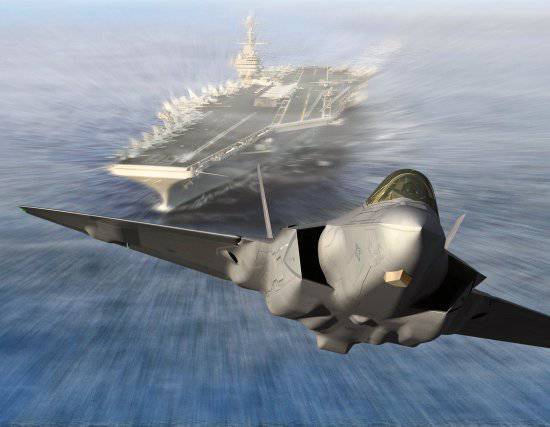
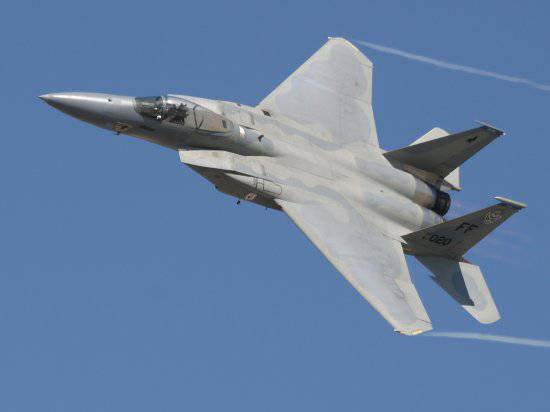
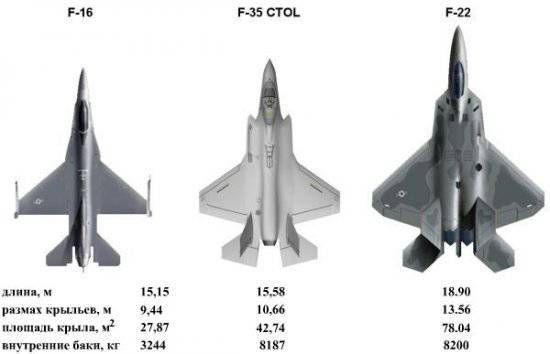
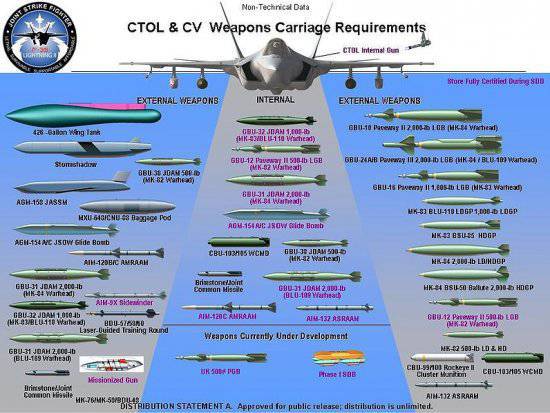
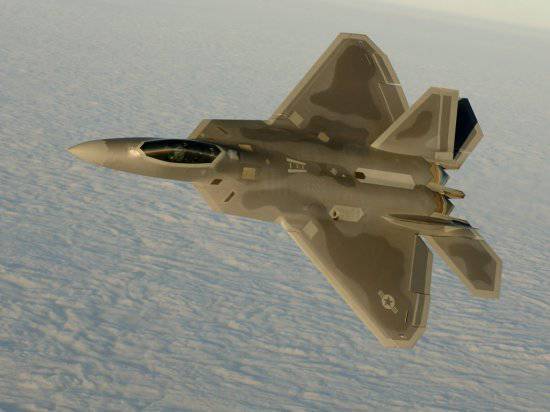
Information